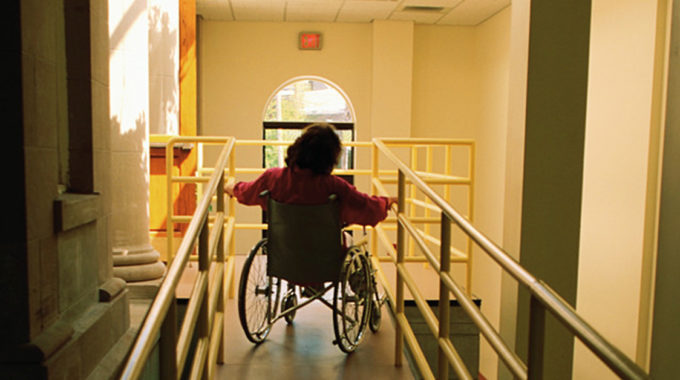
Which is Better, Home Health or Skilled Nursing Facilities?
Trade journals, the blogosphere, and even some news outlets are abuzz with reports covering a scientific article published last month. The Journal of the American Medical Association (JAMA) – one of the most prestigious medical journals in the U.S. – published a massive study comparing home health to skilled nursing facilities (SNFs).1 Journalists have been quick to report that SNFs do a better job of keeping patients out of the hospital. What they usually fail to mention is that real, unadjusted numbers show home health achieving a lower rehospitalization rate than SNFs. Which healthcare program is really achieving better results, and what does this all mean?
What is a Rehospitalization Rate?
Study authors Rachel Werner of the University of Pennsylvania and colleagues used cost, patient improvement, and rehospitalization rates as their main measures. Rehospitalization rate simply means the percentage of people who were discharged from the hospital but had to return for unplanned care. A higher rate suggests lower quality of care and less patient protection. The time-frame for measurement is usually 30 days, but other time-frames are sometimes used.
What Are Risk-Adjusted Numbers?
If you read the introduction of Dr. Werner’s report, the numbers presented are risk adjusted. This is a mathematical way of making sure two groups are compared more accurately. Numbers in one group are changed to make up for differences between two groups. Usually this yields better results. For instance, suppose you are an insurance company and you want to compare the crash rates of car model A to car model B. The cars seem essentially the same, but A has more crashes. You study the data more deeply and find out that purely for style and marketing, young men are more likely to buy car A than car B. You can then find out how much more likely young men are to crash than other drivers and apply that to the crash rate for car A. That way, you are truly comparing the cars and not the drivers. This is better for insurance companies, because if an adult woman buys car A, the insurance company wants to give the most competitive, accurate insurance rate – not have the experience rates of other categories of drivers mixed in.
In the current JAMA study, patients discharging from hospital to SNF were sicker than patients discharging to home health. It’s not fair to compare sicker patients to less sick patients. Researchers increased home health’s rehospitalization rate to make up for the fact that home health had less sick patients. However, this is where troubles with this study begin.
What is the Science Comparing Home Health and Skilled Nursing Facilities?
In the current JAMA study,1 researchers analyzed the Medicare billing records of more than 17 million people discharged from hospitals. They compared home health patients to SNF patients and measured for rehospitalization rates, patient improvement, and costs. They risk adjusted home health’s numbers, making them worse, to make up for the fact that home health patients tend to be healthier than SNF patients. In other words, they risk-adjusted home health’s numbers so they could be comparing apples to apples.
In risk-adjusted data, SNFs achieved a rehospitalization rate that was 5.6 percentage points lower than home health’s rate. That’s a large and important difference. Nevertheless, home health reduced 60-day Medicare spending by about $5,000 per patient. When patients are equally sick, home health and SNF achieve the same functional outcomes.
Why Those Numbers Lead to False Conclusions
The problem with the numbers above is that one should not use them to decide if SNF or home health is better. Looking at the risk-adjusted numbers and not reading the whole study, someone might easily conclude that SNF is better but home health costs less. This would be wrong. Healthcare professionals such as doctors and discharge planners make very important decisions about who can go home versus who needs more inpatient care. When we risk-adjust rehospitalization rates for these patients, we make an unrealistic comparison that undoes the case management work of those professionals.
Here are the real numbers. Without risk adjustment, home health’s 30-day rehospitalization rate was 15.8% versus a comparable 17.8% for SNFs. Patient improvement was the same, but home health reduced 90-day Medicare spending by an average of $9,000 per patient.
Rather than telling us something new, Dr. Werner’s study confirms what healthcare professionals have long known. Home health is effective and less expensive, but inpatient care is more appropriate for sicker patients. The study also tells us that doctors and discharge planners are doing a good job of deciding who goes where when patients leave the hospital. If their tolerance is for a roughly 16% rehospitalization rate, they are sending patients to home health at the right time.
The Real Difference Between Home Health and SNF
Articles that imply one is better than the other miss the point. Home health cannot be better than SNF and vice versa, because they are simply different. While there is overlap between their possible patients, they are appropriate at different times for different reasons. SNF care is better for patients when they need to have a nurse right down the hall, 24 hours per day. Home health is appropriate when it’s enough to have a nurse who can drive to a patient’s home when called. Neither is better at patient improvement. Home health offers the advantages of patient comfort and large cost savings.
Home health saves money for Medicare and for patients. Because Medicare pays 100% of allowable charges from certified home health agencies, home health patients have no co-pays, deductibles, or cost sharing of any kind.
Reference:
- Werner RM, Coe NB, Qi M, Konetzka RT. Patient outcomes after hospital discharge to home with home health care vs to a skilled nursing facility. JAMA Internal Medicine. 2019 Mar 11.






